
Unexpected Patterns of Streamwater Nitrogen Loss From Watersheds
Unexpected Patterns of Streamwater Nitrogen Loss From Watersheds
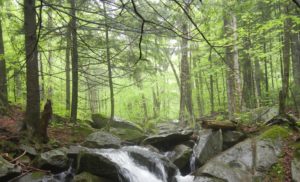
The streams at Hubbard Brook are closely interconnected with the forests around them. Ecological theory led us to expect that in the period that we have been measuring the stream chemistry (1963-present), stream nitrate concentrations should have increased because of the continuing deposition of air pollutant nitrogen on the ecosystem, and because the forests have matured and are no longer accumulating nitrogen. In contrast to those expectations, stream nitrate concentrations have declined in the last several decades, leading us to delve deeper into the nitrogen cycle of the forest to explain this surprising finding.
Credit: Clare Nemes
A mismatch between theory and data has led HBR LTER researchers to re-examine the role of denitrification, the role of mineral soil in nitrogen dynamics during succession, and the role of climate change in “tightening” the nitrogen cycle.
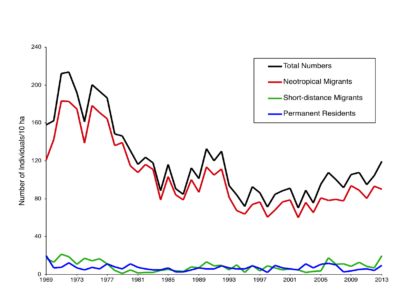
Previously Declining Songbird Populations Show Signs of Stabilizing
Previously Declining Songbird Populations Show Signs of Stabilizing
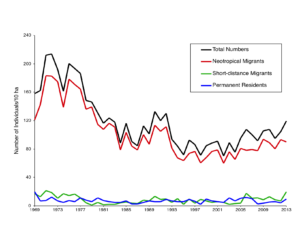
Hubbard Brook researchers have been studying bird populations for over 50 years. This graph shows the number of birds breeding on a 10-hectare forest plot from 1969-2013. Neotropical migrants show a marked decline early in the record, followed by a stabilization of population more recently. Populations of hort-distance migrants and permanent residents have been stable throughout this period.
Credit: Holmes, R.T. and Likens, G.E. 2016
Songbird declines are primarily due to the loss of neotropical migrant species, particularly species that nest and forage in mid-successional habitats. These species have become less common as the forest has matured.
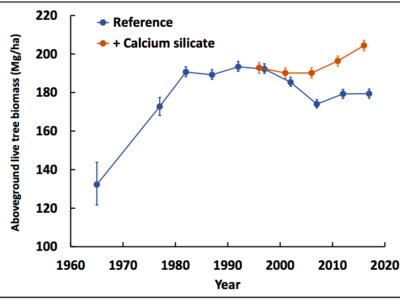
Calcium is Critical to Forests Exposed to Acid Rain
Calcium is Critical to Forests Exposed to Acid Rain
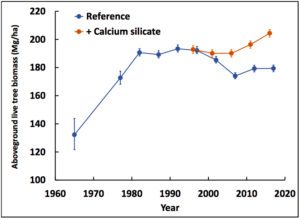
Ecosystems at Hubbard Brook have been subject to acid deposition for over 50 years, leading to the depletion of important nutrients, such as calcium, from the soils. We experimentally replaced the depleted calcium on an entire watershed by spreading a calcium-containing mineral from a helicopter. There was an almost immediate response by the vegetation, particularly sugar maple trees. The increased growth of sugar maple reversed the forest stagnation and decline that had been occurring previously and which continued to occur in a nearby reference watershed.
Credit: Battles, J. J., T. J. Fahey, C. T. Driscoll, J. D. Blum, and C. E. Johnson. 2014
De-acidification of an entire watershed through calcium silicate application led to improved tree growth, health, and reproduction; increased decomposition and loss of soil organic matter; decreased root growth; and increased loss of nitrogen in stream water starting ~10 years after application. Lack of calcium may be inhibiting the regeneration of sugar maple in harvested watersheds.
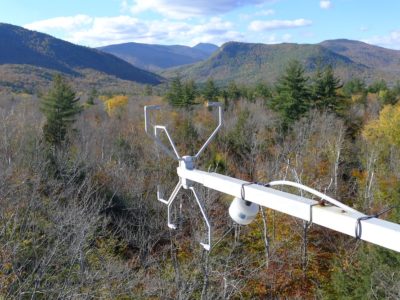
Climate Change Affects Forest Productivity
Climate Change Affects Forest Productivity
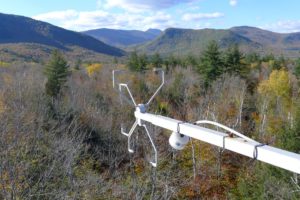
View of the greening-up canopy of the Bartlett Experimental Forest, a sister site to Hubbard Brook, from the top of a tower where carbon dioxide exchange in measured by the eddy covariance technique. The instrument in the foreground is a sonic anemometer. These measurements of the exchange of carbon dioxide between the forest and the atmosphere provide a direct measurement of forest productivity. Year-to-year variation in how much carbon dioxide the forest removes from the atmosphere is strongly related to the timing of the start and end of the growing season, with early spring leaf-out and delayed autumn senescence both tending to increase carbon uptake.
Credit: Andrew Richardson
Climate change has extended the growing season and altered conditions during seasonal transitions. It has also had significant effects on the fluxes of whole-system carbon and nitrogen.










